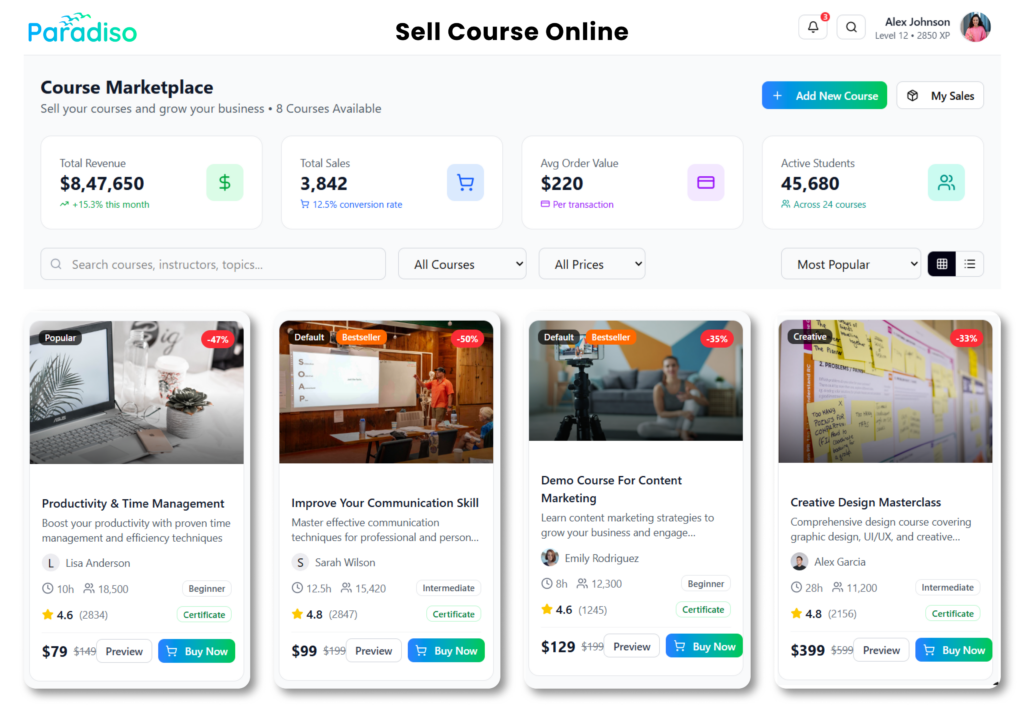Continuing education refers to the process of learning new skills or acquiring new knowledge after completing formal education. It is becoming increasingly popular for individuals to stay current with industry trends, improve job performance, and increase earning potential.
One of the significant advantages of continuing education is that it allows individuals to adapt to changes in the job market and stay competitive in the workforce. It can also open up new career opportunities and help individuals transition into different fields.
Learning management systems (LMS) play a major role in the delivery of continuing education. An LMS is a software application that allows for creating, managing, and delivering online learning content. As a result, educators can easily create and distribute online courses, track student progress, and provide feedback.
Having an LMS can significantly benefit organizations that offer continuing education as it allows them to scale their offerings and reach a larger audience. Additionally, LMS can provide a cost-effective and flexible way to deliver training, making it accessible to a broader range of people.
In summary, continuing education is a trend because of its many advantages, such as staying current with industry trends, improving job performance, and increasing earning potential. LMS plays a major role in delivering continuing education, allowing organizations to offer training cost-effectively and flexibly and reach a larger audience. If you are an organization or an individual looking to offer or take continuing education, an LMS may be a good option for you to consider.
- Course creation and management tools: A good LMS should have an easy-to-use interface for educators to create and manage course content. This includes uploading documents, creating quizzes, and adding multimedia content. The LMS should also allow educators to organize course content into modules and units and to set up prerequisites for certain content.
- User management capabilities: A good LMS should allow for creating and managing student and instructor accounts. This includes assigning roles and permissions, such as student, instructor, or an administrator. It should also allow for the creation of groups and the ability to assign students to specific groups.
- A robust grade book: A good LMS should have a grade book feature that allows educators to track student progress, view assignment submissions, and provide feedback. The grade book should also allow for calculating grades based on various criteria, such as assignment completion, quiz scores, and participation in discussion boards.
- Interactive course content: A good LMS should have interactive content, such as quizzes, polls, and discussion boards. These interactive elements can help to engage students and facilitate learning by allowing them to test their understanding and participate in discussions with their peers.
- A calendar and schedule feature: A good LMS should have a calendar and schedule feature that allows educators to plan and schedule course activities and deadlines. This feature helps keep students and instructors on track and ensures that all course materials are available appropriately.
- Support for multimedia content: A good LMS should support multimedia content, such as videos, audio recordings, and images. This can enhance the learning experience by providing students with various ways to consume and interact with course content.
- A progress tracking system: A good LMS should have a progress tracking system that allows students to see what they have completed and what they still need to do. This feature helps keep students motivated and on track with their learning.
- A mobile-responsive design: A good LMS should have a mobile-responsive design, allowing students to access course content and participate in class activities from any device. This can support remote learning and make it easier for students to participate in class from anywhere.
- A built-in communication system: A good LMS should have a built-in communication system, such as email or instant messaging, to facilitate communication between students and instructors. This feature helps keep students and instructors connected and allows for real-time feedback and support.
- Integration with other tools and platforms: An effective LMS should possess the capability of integration with other tools and platforms such as Zoom or Google Classroom. This can support virtual or hybrid learning environments and make it easier for educators to use various tools to support student learning.
Choosing Paradiso LMS for continuing education
All of features listed above, such as course creation and management tools, user management capabilities, a robust grade book, interactive course content, a calendar and schedule feature, support for multimedia content, a progress tracking system, a mobile-responsive design, a built-in communication system, and integration with other tools and platforms, can be found in Paradiso LMS. It is considered the best platform for continuing education as it offers all the necessary tools and functionality to support effective online learning.
It is user-friendly, and its easy-to-use interface makes it easy for educators to create and manage course content, track student progress, and communicate with students and other instructors. It also allows for various interactive elements to engage students and facilitate learning. It is also mobile responsive, making it easy for students to access course content and participate in class activities from any device. Furthermore, its integration capabilities allow connecting with other tools and platforms to support virtual or hybrid learning environments. Overall, Paradiso LMS is the perfect solution for continuing education needs.













